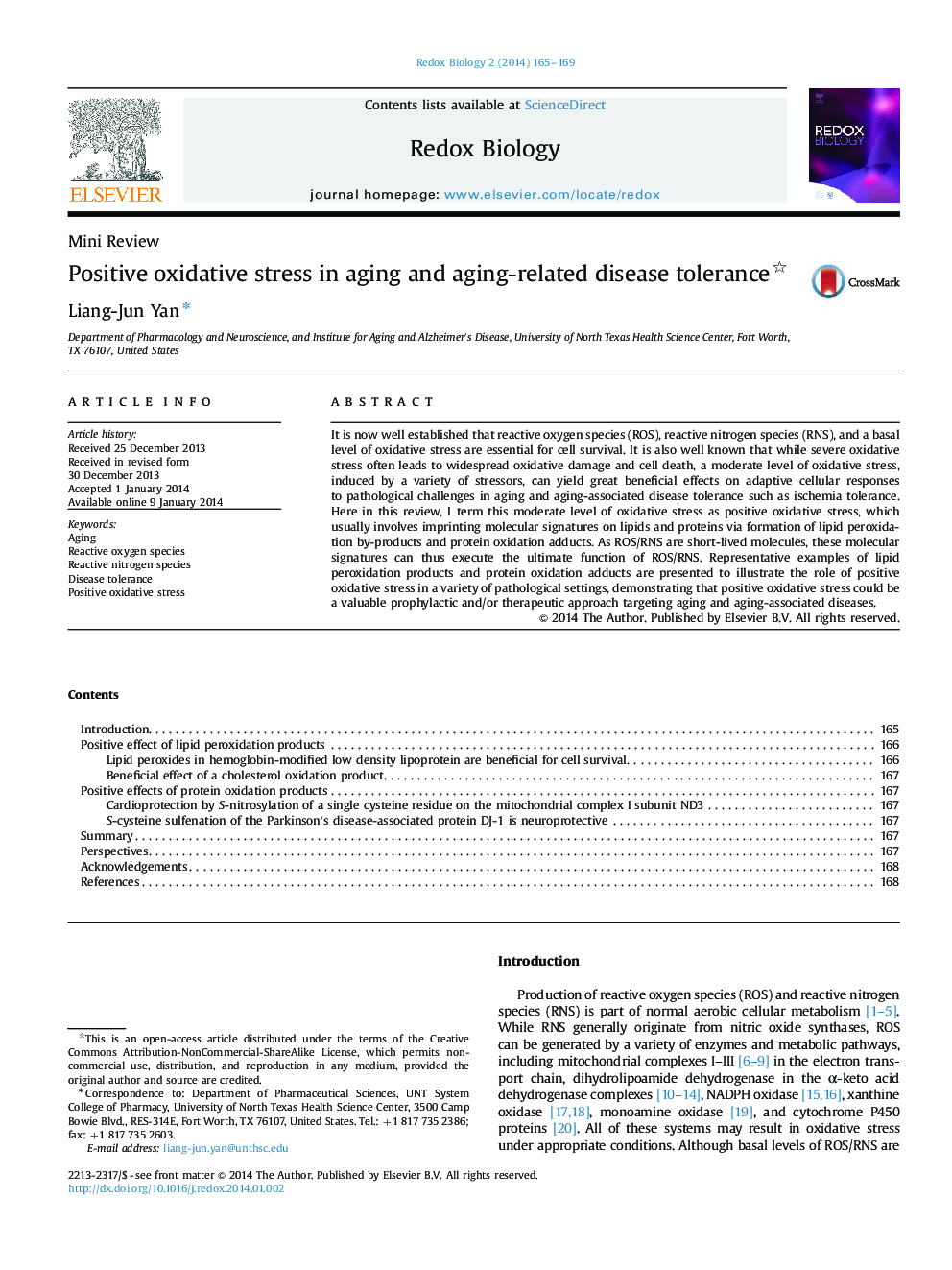| Article ID | Journal | Published Year | Pages | File Type |
|---|---|---|---|---|
| 1922992 | Redox Biology | 2014 | 5 Pages |
•Basal levels of ROS and RNS are essential for cell survival.•Severe oxidative stress and oxidative damage usually lead to cell death.•Positive oxidative stress can be induced by preconditioning and postconditioning.•Lipid- and protein oxidation can execute the effects of positive oxidative stress.•Positive oxidative stress can serve as a prophylactic or therapeutic approach.
It is now well established that reactive oxygen species (ROS), reactive nitrogen species (RNS), and a basal level of oxidative stress are essential for cell survival. It is also well known that while severe oxidative stress often leads to widespread oxidative damage and cell death, a moderate level of oxidative stress, induced by a variety of stressors, can yield great beneficial effects on adaptive cellular responses to pathological challenges in aging and aging-associated disease tolerance such as ischemia tolerance. Here in this review, I term this moderate level of oxidative stress as positive oxidative stress, which usually involves imprinting molecular signatures on lipids and proteins via formation of lipid peroxidation by-products and protein oxidation adducts. As ROS/RNS are short-lived molecules, these molecular signatures can thus execute the ultimate function of ROS/RNS. Representative examples of lipid peroxidation products and protein oxidation adducts are presented to illustrate the role of positive oxidative stress in a variety of pathological settings, demonstrating that positive oxidative stress could be a valuable prophylactic and/or therapeutic approach targeting aging and aging-associated diseases.
Graphical abstractFigure optionsDownload full-size imageDownload as PowerPoint slide
